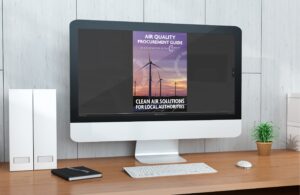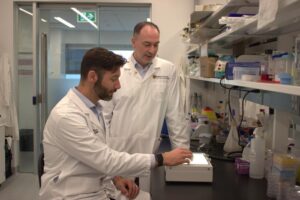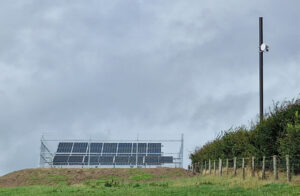Big Interview: Shirley Rodrigues, Deputy Mayor of London for Environment

Following the expansion of the London Ultra Low Emission Zone (ULEZ) in October 2021, Air Quality News reporter Chloe Coules asks Shirley Rodrigues what is next for air quality policy in the capital.
Following her senior policy experience where she helped to implement the London Low Emission Zone, Shirley Rodrigues was appointed as Deputy Mayor for Environment and Energy in 2016.
She now uses her expertise to deliver the Mayor’s plans for tackling air pollution across the capital, including the recent expansion of the ULEZ, new charges for the oldest and most polluting vehicles and creating Low Emission Bus Zones.
However, no experience could have prepared her team for the challenges of delivering the ULEZ expansion during the Covid-19 pandemic.
The Deputy Mayor tells Air Quality News that delivering the project while working remotely was a ‘huge challenge’.
One of the biggest issues that they faced was with supply chain shortages. Shirley explains that as people became ill and recovered from Covid-19, there were lots of interruptions which required good project management from Transport for London and within the Greater London Authority (GLA).
The pandemic also forced the team to get creative about how they informed the public of the changes, utilizing social media, TV adverts and mail outs to raise awareness.
However, according to a recent analysis published by the Mayor’s Office, 92% of vehicles driving into the zone are now compliant.
Shirley says: ‘I think it is testament to all that work that we have seen such high levels of compliance with the scheme.’
Although it is too early to fully understand the impact that the expansion has had on air quality in London, Shirley says that compliance levels are the best way to get an early indicator of the project’s success – which she describes as ‘phenomenal’.
There has also been a large decline in the number of vehicles that are being driven in the ULEZ, with around 47,000 fewer non-compliant vehicles being seen in the zone on each average weekday.
Shirley attributes this success to the work of the marketing and communications teams at TfL, who made sure that people understood what needed to be done and more importantly why air pollution is a health and climate emergency.
Despite the success of the scheme so far, much more work is needed to reach the Mayor’s target of reducing car traffic by 27% by the end of the decade to support London’s net zero ambition.
The Deputy Mayor tells Air Quality News that Londoners should expect to see further measures in the coming years to reduce traffic: ‘[Meeting the Mayor’s target] would ideally require some form of smart road user charging by the mid to late ‘20s – certainly by the end of the decade.
‘The Mayor has already said that we would keep this under review in the Mayor’s Transport Strategy. But that is going to take some time – nowhere has that sophisticated level of charging in place so it is going to require a lot of brains and innovation to come up with the technology, the approach to how you manage it, the back office systems and so on.
‘Sadiq Khan is trying to start to get those innovators and businesses to come to London and work with us, because we want to look at this and we are the ones that are taking this really seriously.
‘But in the meantime, air pollution and congestion cannot wait for that system to be developed, we need to take action now and use whatever powers and initiatives that we are able to take.’
An example of the need for further action was highlighted with the recent air pollution event, which saw Londoners told to avoid strenuous physical activity on 14 January as air pollution was predicted to hit its highest peak since 2018.
The government’s official advice was criticised by campaign groups like Greenpeace and Global Action Plan for putting the onus on the vulnerable instead of polluters.
However, Shirley urges: ‘The message we want to get out to people is drive less. If you have to use your vehicle, please don’t drive a polluting vehicle on medium and high pollution days, don’t use your wood burning stove and so on. That health messaging is absolutely critical to get to people out there, so people are able to manage their own exposure, whether it is by not exercising or whatever.’
Shirley says there is still ‘lots more’ that she wants to achieve in her role as Deputy Mayor for Environment and with the World Health Organisation (WHO) air quality guidelines tightening, Shirley and her team are pushing for secondary legislation to put the WHO targets into law so local authorities can act on them.
‘There are so many people who are working in London on this issue and who are really taking action. But like climate change, we all need to take action. That means the government enabling local authorities, health professionals and individuals to make the changes that we need to see.’
This article first appeared in the latest Air Quality News Magazine, click here to view.


















Great stuff and a fantastic post. Thank you for providing this information. Thank you once more!!